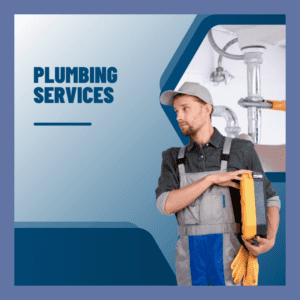Are you tired of dealing with weak water pressure in your home? Low water pressure can be frustrating, especially when you’re trying to take a shower or wash the dishes. Fortunately, there are several steps you can take to diagnose and fix low water pressure issues. Here are some tips to help you get your water flowing smoothly again!
1. Check for Leaks
The first step in diagnosing low water pressure is to check for leaks in your plumbing system. Look for any visible signs of leaks under sinks, around toilets, and in your basement or crawl space. If you notice damp spots or water pooling, it’s a clear indicator that you might have a leak somewhere in your plumbing. Even a small leak can lead to significant pressure loss, so addressing this issue is crucial. If you suspect a leak but can’t find it, it might be time to call in the experts at Frost & Kretsch Plumbing.
2. Examine the Fixtures
Sometimes, low water pressure can be attributed to clogged fixtures. Faucet aerators and showerheads can accumulate mineral deposits over time, restricting water flow. To fix this, simply unscrew the aerator or showerhead and clean it with vinegar or a descaling solution. If the fixture is too clogged or damaged, it might be time for a replacement.
3. Test the Pressure
Next, you’ll want to measure the water pressure in your home. You can purchase a water pressure gauge at a hardware store and attach it to an outdoor spigot. The ideal water pressure for most homes is between 40 and 60 psi (pounds per square inch). If your pressure is significantly lower than this range, it’s time to investigate further.
4. Check the Main Shutoff Valve
Your home’s main shutoff valve may not be fully open, which can restrict water flow. Locate the valve, usually found near the water meter, and ensure it’s fully turned counterclockwise. If it’s partially closed, opening it can often restore your water pressure to normal levels.
5. Look for Pipe Issues
If you’ve ruled out leaks and checked your fixtures, it might be time to inspect your pipes. Old, corroded, or damaged pipes can significantly reduce water pressure. If your home has galvanized pipes, they might be rusting internally, causing blockages. In such cases, you may need to consider repiping your home. Consult with Frost & Kretsch Plumbing to evaluate the condition of your plumbing and discuss your options.
6. Consider Your Water Heater
If you’re experiencing low water pressure only when using hot water, your water heater might be the culprit. Sediment buildup can affect the efficiency of your water heater, leading to reduced pressure. Flushing your water heater annually can help prevent this issue. If the problem persists, you may need to replace the unit or consult a professional.
7. Install a Pressure Regulator
If your home has inconsistent water pressure, consider installing a pressure regulator. This device can help maintain a steady water pressure throughout your home. Consult with Frost & Kretsch Plumbing to determine if a pressure regulator is a good fit for your plumbing system.
Conclusion
Improving water pressure in your home doesn’t have to be a daunting task. By following these steps, you can diagnose and fix common issues that lead to low water pressure. If you need assistance or are unsure where to start, don’t hesitate to reach out to Frost & Kretsch Plumbing. Our experienced team is ready to help you restore your water pressure and ensure your plumbing is in top shape!
For more information, visit us at grossepointeplumbing.com or call us at (586) 929-8980. You can also find us at 20315 Mack Ave, Grosse Pointe, MI 48236. Let’s get your water flowing the way it should!
Expert Drain Cleaning in Grosse Pointe Woods by Frost & Kretsch Plumbing Inc.

